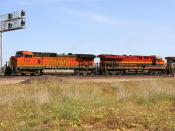There are many websites on the Internet that now allow people of all ages to create their own profiles in order to meet other people who may or may not live near them (Wagner). MySpace, one of the most popular social networking websites, currently has 76 million users and that number continues to grow everyday by the thousands (Goff). Facebook, a popular social networking site among college students, averages 250 million hits every day (Bugeja). The media has been discussing the dangers of social networking sites more frequently in the recent months; this has led to many people wanting to ban social networking sites (Goff). Others would like the teens that use these sites in high numbers to think about what they are posting and what consequences they may face in the future because of the information posted on their social networking site (Wagner). Many people also believe that social networking sites are wonderful because they allow organizations to communicate with large groups of people (Blanchfield).
Before social networking sites appeared, people simply used chats and message boards. One of the first message boards was created in 1978 by two IBM workers. Ward Christensen and Randy Suess were discussing the newsletter for their computer hobbyist club, which was always looking for articles to publish. Christensen figured that it would be convenient to download all the articles onto a central computer and then put them into a newsletter. They then decided to replace the club corkboards, which was a place that members could leave a message for the club to read by writing it on an index card and posting it. After two weeks they created the Computerized Bulletin Board System (CBBS). CBBS quickly became popular and hundreds of users began to discuss many different topics. As the Internet became popular,


